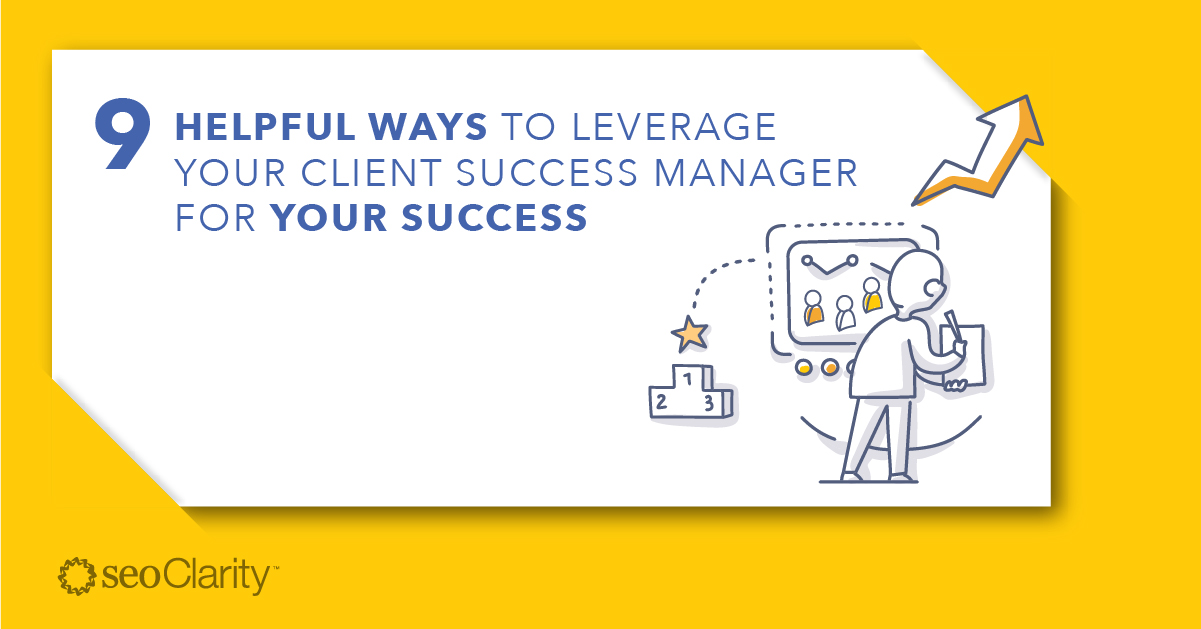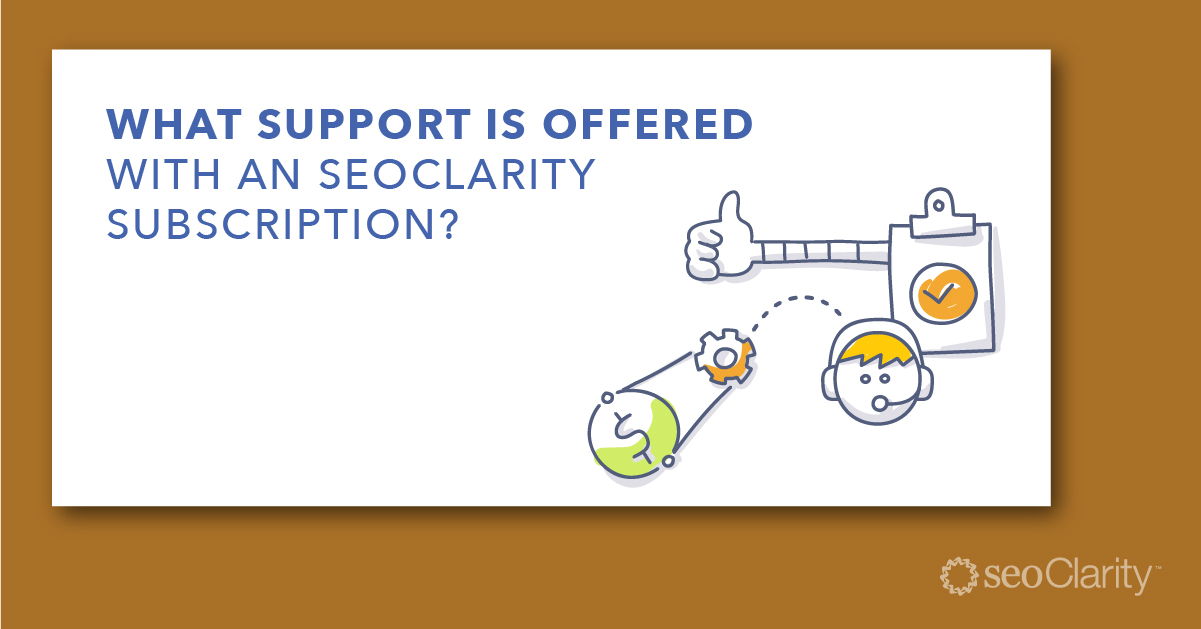In my role as a Client Success Manager, I am sometimes asked about how seoClarity handles feature requests and how and when we choose to build something in alignment with our product development process.
Our platform is built to solve clients’ most complex challenges with Search Experience Optimization, and their success is critical to our approach to building our ever-evolving, dynamic platform that keeps up with the fast pace of change in this industry.
At seoClarity, we’re proud to provide the best technology and innovations to our clients so they achieve success in SEO - whether that revolves around overall search visibility, keyword research, competitive analysis, or all of the above.
So, what’s the secret to driving our product roadmap? First, we have to address the overall approach to why we built the platform in the first place.
Our Approach to Building an SEO Platform
Our success is based 100% on listening to our clients challenges, needs, and requests. We believe that, as SEO evolves and the search landscape constantly changes, so too should our platform evolve and adapt to accelerate and scale our client’s SEO performance.
This approach follows three guiding principles designed to provide clients with the following:
- All SEO data, metrics, and capabilities in one single platform
- No artificial limitations
- A product that is built to solve real challenges that SEOs just like you face every day
Let me break this down for you.
All SEO Data, All SEO Metrics, All SEO Capabilities
When we say that we provide you with all the data, all the metrics, and all the capabilities in one single place, we’re taking full ownership with stating that we are a true, one-stop solution to help you succeed at building a great search experience.
You might be thinking, “Dustin, so what? Why does this matter to my overall success and work with seoClarity?” Great question!
We know that the average SEO relies on at least 6 different tools to do their job - tools for gathering data, parsing out keywords, and reporting metrics. When you compare enterprise SEO platforms to these point solutions, the difference is stark.
Individual tools create tremendous complexities for enterprise brands that aim to scale. SEOs also spend a ton of unnecessary time toggling between multiple tools and seeking support and training which leaves little time to actually execute on the SEO priorities.
For this reason, we have always aimed toward being the single source of everything a client could possibly need in SEO, not just in the technology, but also in support, training, consulting, and beyond.
No Artificial Limitations
The SEO marketplace is cluttered with solutions that set out to nickel and dime clients for every last thing. I’ve heard the horror stories from clients’ past experiences with things like crawl limitations, inability to download ranking data (that they paid for!), little support from a client success team, and the limited number of users that can access the platform. Yikes!
We work to identify these challenges clients have faced with other providers; and, where technology, data, and cost allow, we remove these limitations from our own platform.
This is the reason, for example, why we built Rank Intelligence and its limitless ability to analyze any competitor. It's also the reason we built our own Research Grid Data set 5 years ago, so clients could have unfettered access to the data set for any historical date and download whatever they need for their analysis - again, without limitations. It’s also why we invested in our site audit technology, Clarity Audits, to include a built-in site crawler so that clients could crawl as much as they want, as deep as they want, and as fast as they want.
Built to Solve Real Challenges
When Mitul Gandhi, our Co-Founder and Chief Product Architect, and our development team started building the platform back in 2007, the advantage over competing enterprise SEO platforms was the simple fact that, as SEOs ourselves, we could comprehend the challenges that other SEOs faced at that time and were able to build around those exact challenges.
In order to maintain the edge, our approach is to have 100% of our product roadmap based on input from our clients.
Yep, you read that correctly: ALL of our product roadmap is based on the input and suggestions from our clients.
That’s pretty amazing, right? This means that as a client of seoClarity, you (yes, YOU!) have the ability to determine what’s next by submitting a feature request that we can convert into a product feature to help other clients achieve the same success you’re after.
It’s important to note, however, that we are not a custom development shop. As a SaaS platform, our objective is to develop features that the majority of our clients might find beneficial
Furthermore, a totally client-driven roadmap does not mean that your wish is our command. Our development and prioritization process helps outline how requests are handled once you submit.
The seoClarity Development Cycle
So, what exactly does that Development Cycle look like?
Our team manages projects using the Agile Methodology, which means that all tasks are broken down into two-week long "sprints" with the objective of building and delivering new value to end users by the end of every sprint.
This is atypical to what we usually see in the industry, where development is completed quarterly or on a biannual basis. This incredible speed of development and innovation allows us to attend to client requests quickly, build and deliver value as it’s needed, and offer the richest set of features and capabilities of any enterprise-class platform.
But, just because we can build it doesn’t always mean we should.
Product planning involves taking individual use cases and specific features clients seek and identifying patterns and overall solutions that address the real underlying challenges.
Given our approach, we receive a tremendous amount of input from clients - which is awesome! Over time, however, we’ve developed a process that helps us validate which requests get prioritized.
We ask ourselves the following questions:
- Have two or more clients requested this?
- Is the data, metric, or capability relevant to SEO based on our research?
- Is this feasible from a technology, time, and cost perspective?
- Will it drive success and is there a good use case?
- Would this be useful for at least 60% of our clients?
There are, of course, plenty of data points, metrics and capabilities that we meaningfully choose not to include since they don’t meet the above criteria. As the search landscape changes, we reevaluate and retire existing data, metrics and capabilities if they no longer meet the above criteria.
When is My Request Going to Be Built?
Once we determine the feature request meets our criteria, then it’s all systems go (for the most part). First, we have to see how this fits into the roadmap! We prioritize your request based on the following criteria.
The Complexity of the Request
If it’s highly complex, it likely needs extra work on the backend to collect new data and provide new workflows to address architectural change in the platform. A mid-range complexity means that data exists but the update or change will impact more than one part of our platform. Low complexity infers that while the data and UI exists, additional items like display or UI need to be addressed with minimal resources.
The Time It Takes to Build
Often, what outwardly appears are simple and quick to execute can be a significant undertaking due to the nature of our architecture or the data sets available to us. On the other hand, what seems very difficult can be simple for us to execute and turn around.
Collective Value
We always consider the value that this drives to the clients who request a certain feature and the potential value it provides to the 60% or more of platform users. We also have to consider how this request might impact the overall platform and future value for future clients. So, those features that will help the most number of clients will be worked on first.
Competitive Positioning
Of course, a little competition is important to stay steps ahead in any industry. We have to ask where this feature request fits in our remaining competitive in solving a client challenge.
Prioritization
We always have to take the above factors into account when prioritizing projects. Our development cycle is based on the number of clients who would benefit from the new features. When we plan our feature developments, we want to build and release the features that will have the biggest impact on our clients' success as soon as possible. With our two-week sprints, we move fast and work in an agile environment. Even if it isn't present in the platform UI, there are so many capabilities and data points available. Make sure to talk to your Client Success Manager about your request.

How Client Success Sees Your Request Through
If you have an idea for a feature you’d like to see in the platform, all you have to do is reach out to your awesomely helpful client success manager (a.k.a. your life raft in your relationship with seoClarity) and they will submit a ticket to our Support Team. Then, the ticket is placed in our Feature Request forum.
From there, the requester receives an email informing them that their request is in the queue for possible scope, meaning our clients are able to go into the forum and check the status of their request by seeing who has “voted” for the same request.
Once your request receives enough votes and is deemed feasible to align with our product roadmap as I’ve outlined above, then your ticket is updated. You can follow along to know the path of what is planned, when it’s in progress and when it is eventually implemented.
Additionally, I show clients all the time how to add their request directly to the forum themselves and receive the same updates I’ve listed above directly to their inbox.
If by chance your request does not get voted upon to move forward into the development cycle, we notify you as to why. While we truly take every request into consideration with the process I defined above, some items will be deprioritized as we monitor the constant changes in the SERP. Google loves to test and throws curveballs often.
My advice? Don’t be discouraged by your feature request being deferred. Speaking with your CSM may give you some insight into this matter or help you leverage their support for a challenge you are facing.
Conclusion
I cannot stress enough the amazing opportunity our clients have to get some skin in the game, so to speak. We truly feel as though it’s our clients that make us most successful and nothing makes that more true than their input into our incredible platform.









Comments
Currently, there are no comments. Be the first to post one!